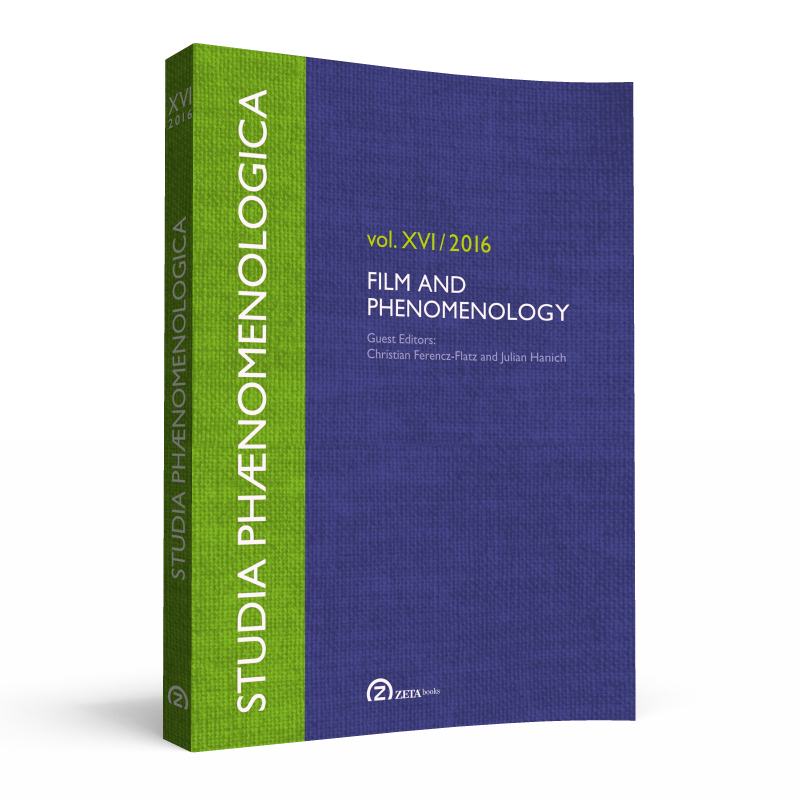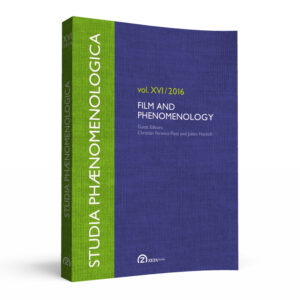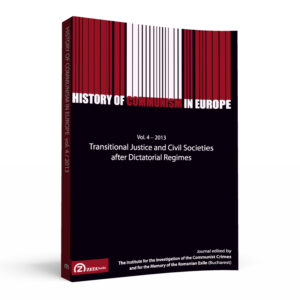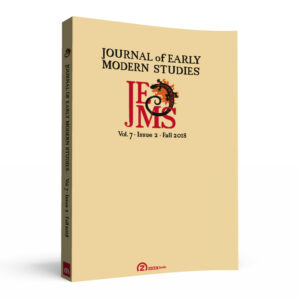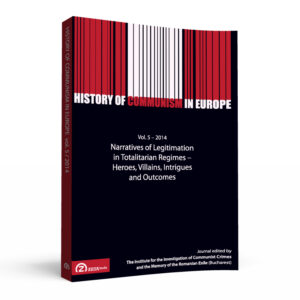FILM AND PHENOMENOLOGY
Christian Ferencz-Flatz and Julian Hanich: Editors’ Introduction: What is Film Phenomenology? [OPEN ACCESS]
Vivian Sobchack: “The Active Eye” (Revisited): Toward a Phenomenology of Cinematic Movement
- Abstract: The foundational basis of the cinematic moving image is camera movement, which occurs not only in the image but also, and from the first, as the image. This essay approaches off-screen camera movement through phenomenological description of the gestalt structure of its four interrelated onscreen forms: the moving image as an intentional and composite “viewing view/viewed view”; the moving image as “qualified” by optical camera movement through subjective modes of spatiotemporal transcendence; the movement of subjects and objects in the moving image as seen by a world-directed camera; and the spatial movement of the camera, whose perspectival vision affirms its status as an embodied, if anonymous, “quasi-subject,” whose visually perceptive motility responds to its world in visibly expressive mobility. Throughout, the essay develops Maurice Merleau-Ponty’s claim that the cinema is, perhaps, the phenomenological art par excellence, given that its “technical methods” correspond to an “existential” and phenomenological “mode of thought.”
Hans Rainer Sepp: Kamera und Leib: Film in statu nascendi
- Abstract: The central thesis of this article is that film is directing and directed kinaesthesis understood as an opening of world beyond the relation of “subjective” and “objective”. Thus the analysis does not focus on the recipients of a movie but on the origins filming finds in specific ways of experiencing, that is, in the living bodies of the persons who decide on the perspective of a take by using the camera’s body. Moved by its filmmakers, the body of the camera is directed as the product of its authors, and is directing insofar as it establishes a world by its own means. The article explains basic forms of opening world by kinaesthetic processes in general (1), and applies this investigation to the corpus of film (2). Finally, the results of these analyses will be put in concrete terms by relating them to basic film features and a few samples of movies (3).
Pierre Rodrigo: Ontologie du mouvement, peinture et cinéma chez Merleau-Ponty
- Abstract: The present paper investigates the late ontology of Maurice Merleau-Ponty, which considers being as expressive movement. The paper takes as its point of departure Merleau-Ponty’s reflections on painting, sculpture and especially cinema. Two reasons justify this choice. On the one hand, Merleau-Ponty’s reflections on film as a work of art are now starting to be better known, after they have been overshadowed by his writings on painting, sculpture or literature for a long time. This entails a considerable enrichment of our interpretation of Merleau-Ponty’s aesthetics and his ontology. On the other hand, if Merleau-Ponty’s general theory of aesthetics leads to questions concerning the sense and the ontological status of movement, it is certain that, within this theory, the analysis of the particular mode of expression of cinematic images gains an extraordinary relevance.
Anna Caterina Dalmasso: Le plan subjectif réversible : Sur le point de vue au cinéma à partir des écrits de Merleau-Ponty
- Abstract: When I am watching a movie, I perceive on the screen a space, which is united and lived, even if it appears as fragmented and separated from the world in which I live. But is the space of the cinematic frame equivalent or commensurable with the one I see through my own eyes? Are they opposed to each other or do they merge together? The most amazing example of the possible convergence of gaze and frame the film realizes is the phenomenon of vision showing itself in the point-of-view shot. How can I perceive what I see on the screen as the vision of another, and the film itself as someone else’s vision? How does this relationship between the visual field of the film and my own, between my body and the screen, challenge the limits between objective and subjective? Drawing on Merleau-Ponty’s reflections about cinema and visibility, I try to outline the traits of what I would call a reversible point-of-view shot.
Orna Raviv: The Cinematic Point of View: Thinking Film with Merleau-Ponty
- Abstract: Previously unpublished fragments of Merleau-Ponty’s insights about cinema have added an important layer to our understanding of the medium. In this paper I examine these fragments along with some of Merleau-Ponty’s other observations about cinema, in the context of his work on perception and temporality. My aim is to show how his thought is relevant for understanding an important topic in film theory: cinematic point of view. With Merleau-Ponty’s phenomenological articulation of what it is to see, the possibility opens up of conceptualizing the structure of cinematic point of view as a “whole” that is concomitantly dynamic and always plural.
Olivier Malherbe: Roman Ingarden et le cinéma : entre visibilité et musicalité
- Abstract: In the vast field of Roman Ingarden’s ontology, film seems to occupy very little space. Indeed, Ingarden dedicated only two short texts to it. This paper aims at reconstructing Ingarden’s theory of film by expanding on the intuitions and sketches presented in those texts, using Ingarden’s general inquiries on aesthetics and specific inquiries on various forms of art (literary works, music, painting, etc.) The paper first focuses on the mode of being of film, trying to elaborate the distinctions made by Ingarden between physical foundation, work of art, and aesthetic object and elucidating the relations between film and reality. The paper then moves on to the investigation of silent pictures as an art of pure visibility, then to talking pictures, taking into consideration all the modifications induced by sound and music. Ontological and aesthetical considerations jointly underpin this attempt to show the richness and significance of Ingarden’s theories.
Matthew Rukgaber: Phenomenological Film Theory and Max Scheler’s Personalist Aesthetics
- Abstract: Max Scheler never published a theory of art, but his aesthetics, like the rest of his thought, occupies an intriguing position that links early phenomenology, Catholic personalist thought, and philosophical anthropology. His metaphysics of the person and theory of value, when combined with his account of the lived-body and of our access to other minds through love, translates into a powerful, humanistic theory of art. This article elaborates what Scheler’s aesthetics would look like had he developed it and applied it to film. Film offers an intimate access to the lives, bodies, and minds of others that is particularly well-suited to Scheler’s idea that art reveals the moral personality—the ordo amoris or “order of love”—that makes up the value-essence of the person. The person’s unique and highest possibilities for acting, feeling, and valuing are the contents of their spiritual essence and these, often thought obscure and inaccessible, are made present in film.
Jean-Pierre Meunier: Le problème de l’identification filmique reconsidéré
- Abstract: This article reconsiders some of the arguments that I made in my two phenomenology-inspired books on what I have called the “filmic identification” in the cinema: Les structures de l’expérience filmique (1969) and Essai sur l’image et la communication (1980). While the former has received some attention in film studies via Vivian Sobchack’s mediating work in her influential essay “Toward a Phenomenology of Nonfictional Film Experience” (1999), the latter is little known in film studies and phenomenological circles. The two guest editors have therefore asked me to introduce and update my former position and place it in the intellectual climate of French-speaking film studies from the 1950s to the 1980s—that is, from the filmology movement to the dominance of semiology and psychoanalysis.
Regina-Nino Mion: Husserl and Cinematographic Depictive Images: The Conflict between the Actor and the Character
- Abstract: According to John Brough, we can use Husserl’s theory of image consciousness to explain the conflict between the actor and the character in cinematographic depictions in terms of an empirical conflict between the “image object” and the “physical thing.” I disagree with him and I shall show that the conflict between the actor and the character can only be explained in terms of a non-empirical conflict between two “image subjects.” The empirical conflict that concerns the subject is between how the actor or the character appears in image consciousness and how it appears or would appear in perception, that is, between the “image subject” and the “subject as it appears in perception.”
Claudio Rozzoni: Cinema Consciousness: Elements of a Husserlian Approach to Film Image
- Abstract: By drawing on Husserl’s manuscripts on Phantasy, Image Consciousness and Memory, this paper aims to shed light on some of the primary concepts defining his notion of image—such as “belief,” “presentification” (Vergegenwärtigung) and perzeptive Phantasie—and endeavours to show how such concepts could be profitably developed for the sake of a phenomenological description of film image. More in particular, these analyses aim to give a phenomenological account of the distinction between positing film images, presupposing a claim to reality—for example the ones we experience in a documentary attitude—and quasi-positing film images involved in artistic creation. The latter, despite their photographic relation to reality, are capable of giving rise to filmic “image-worlds” having intersubjective existence.
Mauro Carbone: The Mutation of our Relations with Screens as a Mutation of our Relations with Being
- Abstract: Traces of Maurice Merleau-Ponty’s constant philosophical interest in cinema have been multiplying since the mid-1990s. These traces lead us to understand that such an interest was implicitly linked to the effort of ontologically rehabilitating the screen understood as the condition of possibility of our vision. Therefore I believe that the late Merleau-Ponty was trying to elaborate a conception of our way of seeing that can no longer be shaped on the representative window model, but rather on the screen model. In this light, my aim is to develop, specify (mainly through my notion of “arche-screen”), and update Merleau-Ponty’s insights concerning the screen as a decisive element of our visual experiences. In such a perspective, it is no doubt very important to reflect on the modified spatio-temporality of desire at work in our present relations to screens. This is what I try to do in the second part of my paper. Indeed, concerning the way in which nowadays screens surround and accompany us at every turn, in which we live through them (and not merely with them), we can state something similar to what Merleau-Ponty wrote about modern painting in Eye and Mind, that is to say that the novelty of that way of painting gave him “a feeling of mutation within the relations of man and Being.”
Corry Shores: Cinematic Signs and the Phenomenology of Time: Deleuze and the Visual Experience of Temporal Depth
- Abstract: By means of Vivian Sobchack’s semiotic film phenomenology, we may examine our immediate perceptual acts in film experience in order to determine the ways that the primordial language of embodied existence found at this primary level grounds the secondary level of the more explicit interpretations we give to the film’s elements. Although Gilles Deleuze is openly defiant toward the phenomenological tradition, his studies of film experience can serve this purpose as well, because he is interested in the direct and pre-verbal significance of cinematic images. To bring his observations more fruitfully into film phenomenological studies, I will examine his notion of the discordantly operating body and offer a phenomenological interpretation for his notion of cinematic signs. I then apply this Deleuzian semiotic film phenomenology to his analysis of deep focus cinematography in Orson Welles’ Citizen Kane (1941). When watching one particular scene, different layers of our film experience, namely, those of visual and of temporal depth, collide in such a way that they provide the phenomenal basis for us to produce a temporal interpretation of the spatial relations held between the displayed images.
Jennifer Barker: Haunted Phenomenology and Synesthetic Cinema
- Abstract: By now it goes without saying that cinema is and has always been a synesthetic experience. But what exactly do we mean when we say that? The paper develops a phenomenology of “cinematic synesthesia” that draws upon three recent developments: first, the neuroscientific “neonatal synesthesia hypothesis”; second, Maurice Merleau-Ponty’s lectures on child psychology and translator Talia Welsh’s contextualization of that work within recent developmental psychology; and third, Dylan Trigg’s concept of a “darkened phenomenology” that accounts for the radically “unhuman.” These conceptual lenses are trained on Stanley Kubrick’s The Shining (1980), whose legendary impact stems from its perplexing tangle of the sensory with the cognitive, the unconscious with the conscious, the individual with the collective, and the past with the present.
Tanya Shilina-Conte: How It Feels: Black Screen as Negative Event in Early Cinema and 9/11 Films
- Abstract: In this essay I engage the perspective of film phenomenology to analyze the black screen as a frame-breaking negative experience, based on an understanding of cinema as event. Relying on Vivian Sobchack’s phenomenological approach and taking inspiration from Cecil M. Hepworth’s How It Feels to Be Run Over (1900), a case in point for a method predicated on the question of “how,” I place emphasis on the “film’s body” and consciousness which, through its own paralysis and impairment, affects the spectator’s lived-body. Following the terminology of sociologist Erving Goffman, I approach both a car accident at the turn of the twentieth century and 9/11 on the cusp of the new millennium as frame-breaking events that generate a profound negative experience. I then describe the black screen in 9/11 films as a frame-breaking occurrence that creates a negative event in its own right. The encounter with the breakage of the conventional mechanisms and modes of the “film’s body” as well as the forced sensory shift lead the spectator to a heightened awareness of his/her own body as a receiving medium that empathetically partakes in the experience of a negative event at the scene of cinema, both perceptually and reflexively.
Jane Stadler: Experiential Realism and Motion Pictures: A Neurophenomenological Approach
- Abstract: This article sets up a neurophenomenological approach to understanding cinema spectatorship in order to investigate how embodied engagement with technologies of sound and motion can foster a sense of experiential realism. It takes as a starting point the idea that the empirical study of emotive, perceptual, motor, and cognitive processes involved in film spectatorship is impoverished without a phenomenological account of the lived experience under investigation. Correspondingly, engaging with neuroscientific studies enriches the scope of phenomenological inquiry and offers new insights into the film experience. Analysis of diverse films including Interstellar, Leviathan, San Andreas and The Thin Red Line reveals how technological innovations dating from Hale’s Tours (pre-1910) to contemporary D-BOX and Dolby Atmos systems have enhanced the audience’s sense of immersion and corporeal investment in the film experience. Building on the research of Vivian Sobchack and Vittorio Gallese, I argue that aesthetic techniques including the use of low frequency sound effects and wearable cameras facilitate shared affective engagement and a form of embodied simulation associated with kinaesthetic empathy and augmented narrative involvement.
VARIA
Frank Chouraqui: Circulus Vitiosus Deus: Merleau-Ponty on the Place of Ontology within Being
- Abstract: This essay attempts to provide a unified analysis of two working notes from The Visible and the Invisible. In these notes Merleau-Ponty questions not only the accuracy of the ontology he is elaborating, but also the incidence and place of this ontology within the Being it describes. He finds that his ontology transforms Being as it describes it, and therefore keeps chasing its tail endlessly. This view is suggested by Merleau-Ponty’s use of Nietzsche’s expression circulus vitiosus Deus as a formula that both he and Nietzsche use to describe the ontological place of their ontology. Merleau-Ponty, like Nietzsche, offers an ontology in which Being is highly sensitive to ontological accounts, construing Being as a principle of commensurability between action and description, language and reality, philosophy and world.
John Krummel: Chōra in Heidegger and Nishida
- Abstract: In this article I discuss how the Greek concept of chōra inspired both Martin Heidegger and Nishida Kitarō. Not only was Plato’s concept an important source, but we can also draw connections to the pre-Platonic understanding of the term as well. I argue that chōra in general entails concretion-cum-indetermination, a space that implaces human existence into its environment and clears room for the presencing-absencing of beings. One aim is to convince Nishida scholars of the significance of chōra in Nishida’s thought vis-à-vis the other Greek concept of place, topos. Another is to convince Heidegger scholars who accuse him of neglecting chōra that, to the contrary, there is evidence of Heidegger’s appropriation of this concept. The point is to show that chōra is significant to the thinking of both while correcting certain misreading and to show its relevance to us today.
Rolf Kühn: Das Affektive als Welt und Fremderfahrung: Zur Einheit radikal phänomenologischer Wirklichkeit als Lebensimmanenz
- Abstract: The paper attempts to propound a new understanding of the experience of the world and others on the basis of a radical phenomenology of the body, as it is revealed in the originary impressibility as affect and desire. This impressibility shapes every relation to beings and others due to the unity of an originary life that founds individuation before any temporal difference, having ethical consequences for a plural communality, which can no longer be characterized by means of mere abstract processes of objectivation.
Christopher Lapierre: Affectivité et imaginaire chez Merleau-Ponty : Nouvelles lectures
- Abstract: The objective of this paper is to show that the specific meaning of “affectivity” in Merleau-Ponty’s works can be better understood by approaching its connection with the notion of “imagination”. This strategy can be contrasted with Sartre’s approach; his specific conception of consciousness locks off the relation between imagination and affectivity from the start. On the contrary, the free play of this axis, which can be analysed since the early Phenomenology of Perception, allows for the overflowing of the horizon of visibility of subjectivity toward a certain invisible. The concrete junction of imagination and affectivity then spreads out into the region of the notion of desire.
BOOK REVIEWS
- Mădălina Diaconu: Iris Därmann (Hg.), Kraft der Dinge. Phänomenologische Skizzen (Paderborn: Fink, 2014)
- Lucian Ionel: Thomas Sheehan, Making Sense of Heidegger: A Paradigm Shift (London, New York: Rowman & Littlefield International, 2015)
- Rolf Kühn: Jean Reaidy, Naissance mystique et divinisation chez Maître Eckhart et Michel Henry (Paris: L’Harmattan, 2015)
- Ştefan-Sebastian Maftei: Alfonsina Scarinzi (ed.). Aesthetics and the Embodied Mind: Beyond Art Theory and the Cartesian Mind-Body Dichotomy (Dordrecht: Springer, 2015)
ISSN: 1582-5647 (print) / 2069-0061 (online)
ISBN: 978-606-697-034-1 (paperback) / 978-606-697-035-8 (eBook)

